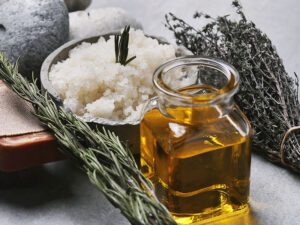Wringing Petrissage Stroke – How to Where to & Effects
Wringing is what is termed a medium depth stroke. These are deeper strokes than effleurage that stimulate muscle tissue under the epidermis and dermis. It is done using 2 hands, pulling flesh and then pushing it together. Therapist look like they are dancing as they use this technique. There are many benefits to using this stroke including, aiding circulation, stimulating the filtering of toxins and relaxing muscles.
Wringing is a medium depth stroke used in a full body Swedish massage routine. This means the pressure applied by the hands when doing it is more than superficial (light) and less than deep (hard). It will affect the skin itself and 1st layer of muscles under the skin. There might also be some effect a bit deeper but, generally this won’t be great. Medium depth strokes are generally the second type of stroke used, after effleurage.
How to Do Wringing Massage
The stroke is done using 2 hands. Hands are placed on muscle as though to grasp (not pinch) flesh between fingers and thumbs. The flesh is lifted and pulled away from the bones. Then the flesh is wrung or squeezed, as you would wring a cloth but, in a slightly gentler motion, to be comfortable. You should be pushing one hands flesh toward the others. This side to side and up and down motion will free up the muscles you are working on. You must be in good communication with your client to make sure you are not using too much or too little pressure with this technique.
Done With the Aid of Rocking to Conserve Energy
Wringing must be used at the right time, that being after effleurage. Using this stroke to spread oil might be difficult or even painful. The strokes can be quite tiring to do. A tired therapist will not be as helpful as a lively, fresh one. So as your therapist does them, they should rock back and forward. This means body weight is used in addition to arm muscles. If seen from fly on the wall camera view, it can look like your therapist is dancing.
Where to do it
Good fleshy area where lots of muscles an be grasped are the place to do this. Examples include the back (trapezius), thighs (quadriceps), calves (gastrocnemius) and upper arms (triceps and biceps). It can also be useful on the shoulders, sides of the lower back, buttocks (gluteus maximus) and across the stomach. (R Hull 2013)
Effects of Wringing
- Aids the circulation of skin and underlying muscle tissues.
- Forces deoxygenated blood into capillaries and out into veins.
- Stimulates the interstitial fluid (the liquid that muscle cells are bathed in) to be taken up by lymphatic capillaries, vessels and then filtered in lymph nodes.
- Improves extensibility or elasticity of tissues. (Rosser 2016)
- Stimulates filtering of toxins, bacteria and damaged cells.
- Raises flesh temperature aiding relaxation.
- Releases tension in muscles while relaxing them.
References:
Rosser, M. (1996) Body Massage Therapy Basics, London, Hodder & Stoughton
Hull R (2013) Anatomy & Physiology for therapists and healthcare professionals, Cambridge, The Write Idea




















